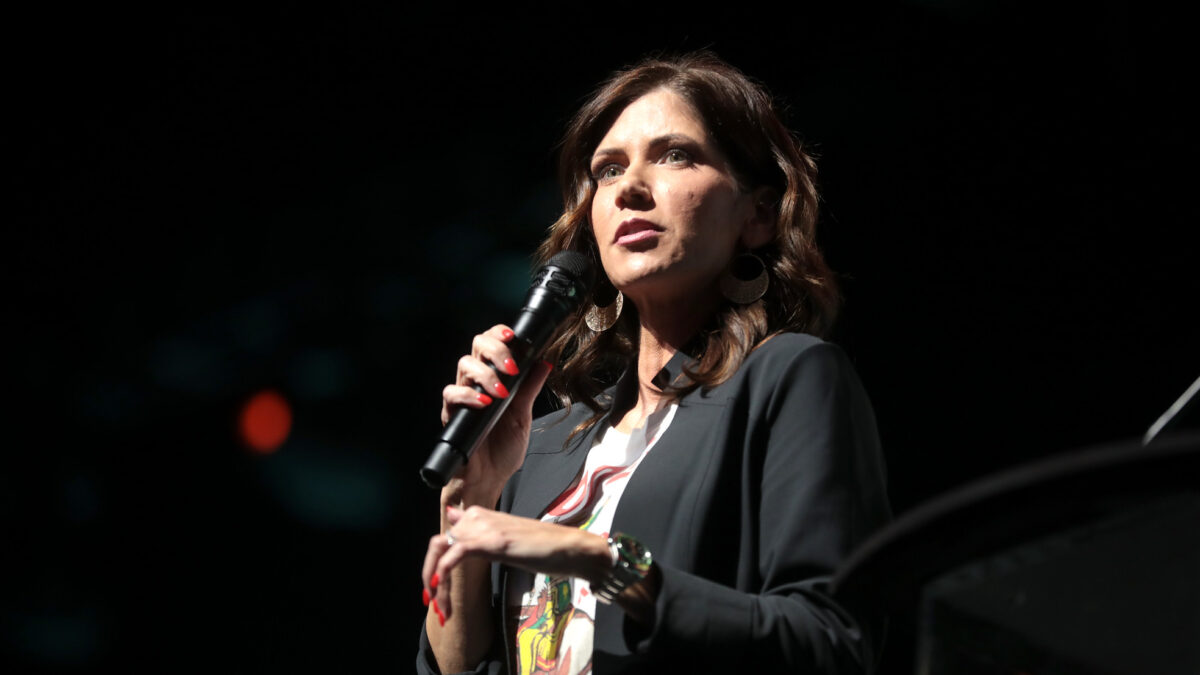
The British features editor of GQ, an international men’s magazine, recently launched a broadside against cultural appropriation — the idea that people should not be allowed to participate in hobbies, wear attire, or pursue careers that don’t reflect the culture they were raised in. Jonathan Heaf’s take is that cultural appropriation is unacceptable because people who weren’t born into a culture don’t understand its struggles and sufferings.
Heaf’s anger is just the latest salvo in a long war over cultural appropriation. Most critics of cultural appropriation, coming from the far left, also fear the rise of white supremacy. But the best way to combat white supremacy is to encourage people of all races, whites included, to borrow at will from other cultures — as drawing more lines between races and cordoning off the exploration of other cultures is wholly contradictory to the end goal of creating a harmonious, diverse, and pluralist society.
When people are free to enjoy the fruits of cultures that they don’t “own,” their race matters less to them. It’s true that people who adopt elements of another culture may not know the historic sufferings of that culture. But when white people don dreadlocks and kimonos (or, as to take an example from GQ, a Pocahontas costume), they’re actually learning about that culture.
Keziah Daum, the 18-year-old whose decision to wear a Chinese cheongsam or qipao prom dress sparked Internet outrage back in April, chose the dress because she “admired the beauty of the culture.” It wasn’t an act of minstrelsy, but an exploration of different fashion elements and traditions.
The Spectrum of Reactions to New Ideas and Experiences
Critics should consider that people who engage in cultural appropriation also become more cosmopolitan and, almost tautologically, less racist. In “The Righteous Mind,” social psychologist Jonathan Haidt explains how people fall along a continuum from neophilic to neophobic—either attracted or averse to new experiences, ideas, and people.
This makes sense from an evolutionary perspective. Ten thousand years ago, neophobia (fear of new things) was useful because the strange tribe across the river might carry diseases that your immune system hadn’t ever encountered and wasn’t prepared for. At the same time, finding new food sources relied on being neophilic (love of new things). Because both traits were evolutionarily advantageous, most humans today fall somewhere on the neophilic-neophobic continuum. Americans who dislike and distrust immigrants, for example, tend to score high on neophobic measures.
But neophobia and neophilia aren’t hardwired from birth. People can change. Jason Manning, a professor of sociology at West Virginia University, told me via email that, “As people from different racial groups interact and adopt elements of one another’s culture, social distance declines. It causes harsh collective moralism––the worst expressions of racism and prejudice––to decline.”
When whites wear geisha dresses and blast East Coast hip-hop, they become more neophilic. Their self-identity changes from “I’m white” to “I’m a white person who enjoys a lot of cultures.”
In contrast, when people are told to stay in their cultural lane and only adopt culture created by people with their skin color, their race becomes more fundamental to their identity. Whites told to avoid cultural appropriation start to seek out cultural elements created by other whites, and their whiteness becomes something they focus on — or worse, something they become defensive about and double down on.
This isn’t just theory. The association that Manning explains, between cultural appropriation and tolerance of diversity, also runs the other way: the less people interact with other cultures, the more “social distance” they perceive between their culture and other cultures and the more likely prejudice is to take root.
Appropriation Outrage Is Likely to Trigger More Racism
Telling white people not to explore elements of other cultures might create more racism among whites. In particular, the outrage at cultural appropriation seems tailor-made to produce more white racism.
Worries about cultural appropriation are grounded in a culture of victimhood, in which one’s virtue comes from his oppression. Bradley Campbell, a professor of sociology at California State University, and Jason Manning explore this phenomenon in their book, “The Rise of Victimhood Culture: Microaggressions, Safe Spaces, and the New Culture Wars.”
They argue that, “In a victimhood culture it’s…your identity as a victim that gives you status. It’s not your own virtue at all, but someone else’s treatment of you, that makes you virtuous.” In this world view, whites are at the bottom of the totem pole, below other races that are historically more marginalized.
But when people are pushed to the bottom because of their ethnicity, they sometimes push back by taking pride in their race. Michelle Alexander documents this phenomenon in her book “The New Jim Crow.” She points out that some black youth adopt “gangsta culture” (her term) as a way of flipping the script and embracing the stigma others have cast on them.
Alexander notes, “Psychologists have long observed that when people feel hopelessly stigmatized, a powerful coping strategy—often the only apparent route to self-esteem—is embracing one’s stigmatized identity.” This phenomenon, Alexander notes, explains both, “black is beautiful” and “gay pride.” These slogans of groups who have been wrongfully relegated to the bottom of society embody a pride in the unchangeable factors of their identity that put them at the bottom in the first place.
Anti-White Overreactions Fuel Resentment
When white people feel, justly or not, that they’re being victimized, many lean into their whiteness and find pride in it. But creating a culture in which whites can plausibly claim victimhood empowers white supremacists, who often claim that whites are victims.
Mitchell Berbrier, a sociology professor at the University of Alabama, Huntsville, studied dozens of media appearances and publications by white supremacists. He found a pattern: they relied on claims of victimhood. For instance, David Duke’s newsletter, NAAWP (National Association for the Advancement of White People) News, published articles with headlines like, “Anti-White Discrimination Accelerates.”
On their face, claims of white victimhood seem laughable. Whites earn more on average than African Americans do and are less likely to have their lives royally screwed up by the criminal justice system, to name just two examples.
But remember that privilege is based on circumstance. Being white may help a young woman if she’s pulled over by police, but her skin color might hurt her in college admissions (or, more likely, when she’s being raked across the coals by a Twitter mob for wearing a Chinese dress).
Victimhood is also a matter of perception. White supremacists like Richard Spencer have more fodder for their recruitment efforts when they can point to any case, cultural or economic, in which whites are treated as lesser.
What to Do Instead
We can end white supremacy by becoming more cosmopolitan and encouraging cultural sharing, not by hardening existing racial divides. But a culture of “inverted racism,” in which those who used to be at the top are made to be the new underclass, while appealing to some in the short term, will simply perpetuate the same problems of racial inequality that have historically plagued the United States.
Critics of cultural appropriation will argue that I’m taking aim at cultural exchange, not cultural appropriation. They contend that the former is acceptable, whereas the latter is problematic. But the way the lines are currently drawn, nearly every adoption of cultural elements by a white person is slammed as appropriation — no matter how good the intent, or how much the “appropriater” admires and learns about the culture he’s exploring. There’s little room for nuance in today’s debate.
One clear dividing line between exchange and appropriation is whether the appropriator seeks permission. But even if we were willing to line up and ask permission, who exactly is supposed to grant that permission? If someone wants to dress as Pocahontas for Halloween, does she need a stamp of approval from everyone of Native American ancestry? Or is it enough if her Native American friend says it’s cool? Or does every Native American person she might possibly see need to condone her costume in advance?
Cultures are amorphous, and no one owns them, which means that no one can grant you permission to adopt a piece of culture. Asking permission before borrowing a piece of culture isn’t just unrealistic, it’s impossible by virtue of what culture is.
Plus, it assumes that there’s some sort of monolithic view on appropriation that all people of a given culture share. Isn’t it belittling and dehumanizing to assume an entire group of people would all respond the same way to a political issue by nature of their skin color?
We Can’t Define It By People’s Feelings, Either
Another dividing line between exchange and appropriation is whether the cultural usage is demeaning. The Root explains: “The determining factor usually depends on whether the person, intentionally or not, otherwise demeans or makes fun of another culture by using something meaningful or traditionally associated with the minority group in question” (emphasis mine).
But whether something is demeaning is in the eye of the beholder, especially because this standard explicitly ignores intent. One Native American woman might be offended by a Pocahontas costume, while another wouldn’t take issue. If a woman takes a photo of her Pocahontas costume and it goes viral, should she be responsible for making sure that none of the millions of people who see it feel demeaned? Making sure that nobody feels offended by your choice of attire is an impossible standard to meet.
Furthermore, ignoring intent means mobs regularly treat offenders as if they’re acting in bad faith, when that’s generally not true — and it’s this dynamic that leads to thousands of Twitter users bullying a high school student for her prom dress.
Social justice warriors should ask themselves if their obsession with the cultural appropriation debate is pushing people toward or away from exploring other cultures. It just might be the latter, which has the nasty side effect of pushing some people further and further into the trenches, and toward xenophobic, neophobic beliefs.
This isn’t to say that anything goes. White people using blackface is probably still a terrible idea, because of its racist and disturbingly recent history. But maybe the standard should be whether the person intended to insult members of another culture, not whether someone, somewhere, might be accidentally insulted.









